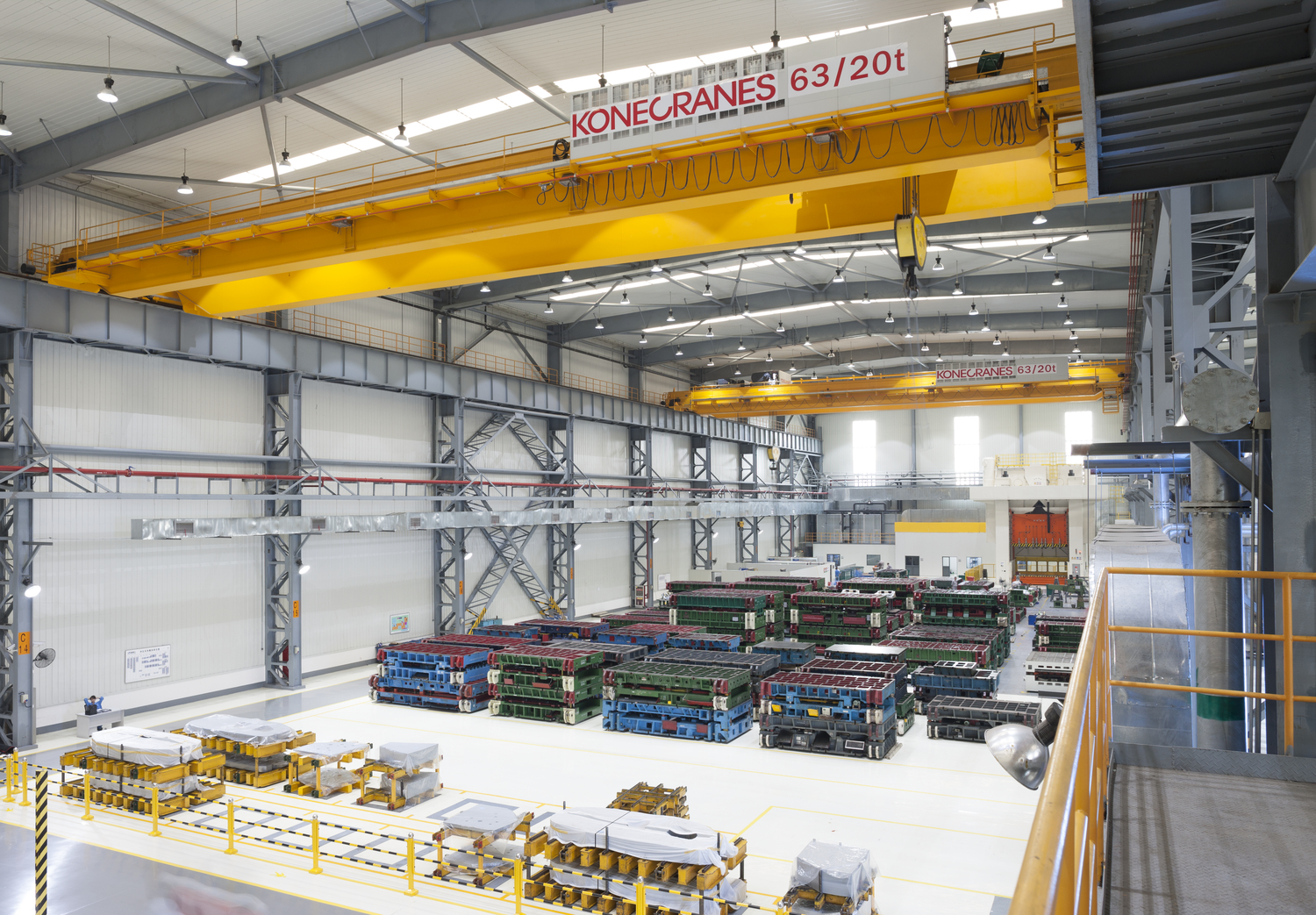

Load turning operation
During a load turning operation, diagonal pull between the two hoists is unavoidable and requires constructive and sensory special measures. For this application, Konecranes only allows the load to be turning in a closed system enabling safe load turning as the hoists are pulled towards each other and no forces are introduced into the building structure.
The die handling cranes for turning loads, developed by Konecranes have special measures that guarantee a safe turning process. These are:
Bidirectional overload sensing: After lifting a load higher than the load capacity of the small hoist, it is not permitted to lower the hoist with the higher load capacity during the entire turning process. Lowering the die in an inclined position is only permitted with the smaller lifting gear. If one hoist is overloaded, the other hoist is blocked in its lowering movement and only lifting at creep speed is possible. This prevents the overloaded hoist from being overloaded even more by lowering the load with the non-overloaded hoist.
Diagonal pull monitoring: The maximum permissible rope angle is measured during the entire turning process. If the permissible rope angle is exceeded, an emergency stop is generated, and a fault message is displayed.
Die flipping
It’s indispensable to have a service provider you can depend on to maintain your operations. For the 25 years I’ve been at Karmax, Konecranes have provided us with excellent products and timely service.
Mike Crevier, Maintenance Manager, Karmax, Canada


Features
• Two hoist trolley (THT) or separate trolley solutions
• Special measures for turning loads that guarantee a safe process. Rope angles up to 10 degrees possible.
• Overload protection (system consists of load cells and overload detection unit)
• Overspeed control
• Smart features
• Joystick Radio and pendant
• Second brake for hoisting can be provided
• Frequency controllers for main movements
• Emergency brake
• Truconnect
• Electrical room is pressurized and air-conditioned


Benefits
• Hoist synchronisation helps in precise and fast load handling
• Semi-automated smart features improve safety and productivity
• Overload protection
• Overspeed control of variable speed hoisting
• Simplified and minimized maintenance costs.
• Remote service helps solve problems fast and provides data for maintenance planning
• Joystick Radio and pendant for backup and maintenance use
Technical Specification



